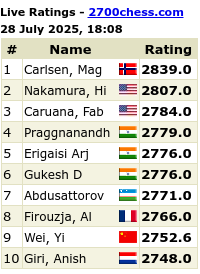For those that are not sure what this is, essentially the reloader tactic involves sacrificing a piece (e.g. Knight-1) which MUST be taken due to the threat it poses ... but once this threat has been expunged then the same threat can be recreated (reloaded) with another piece of the same type or movement (e.g Knight-2).
In this game I used Knight-1 to create the first threat (my opponent resigned here but if Knight-1 had been eliminated then I could then have reloaded the threat with Knight-2!).
As usual - any comments welcome!!
PGN Viewer courtesy of http://chesstempo.com/





